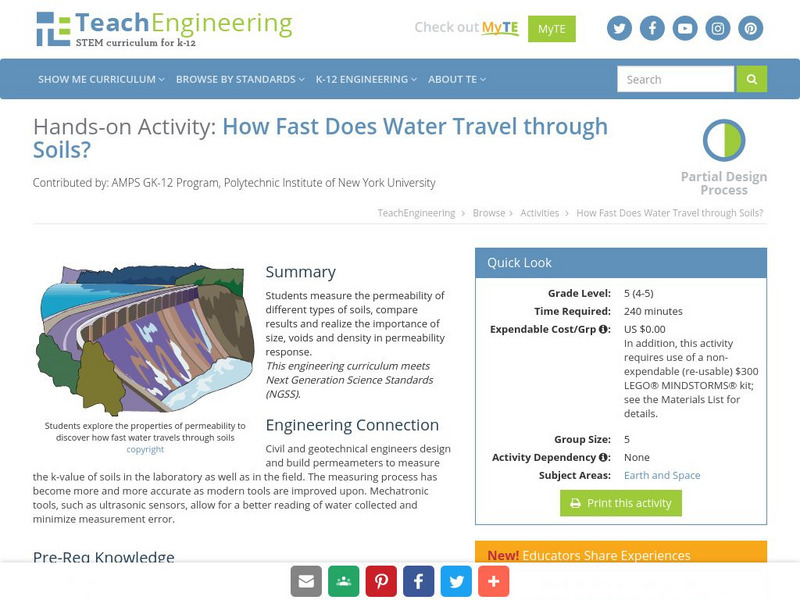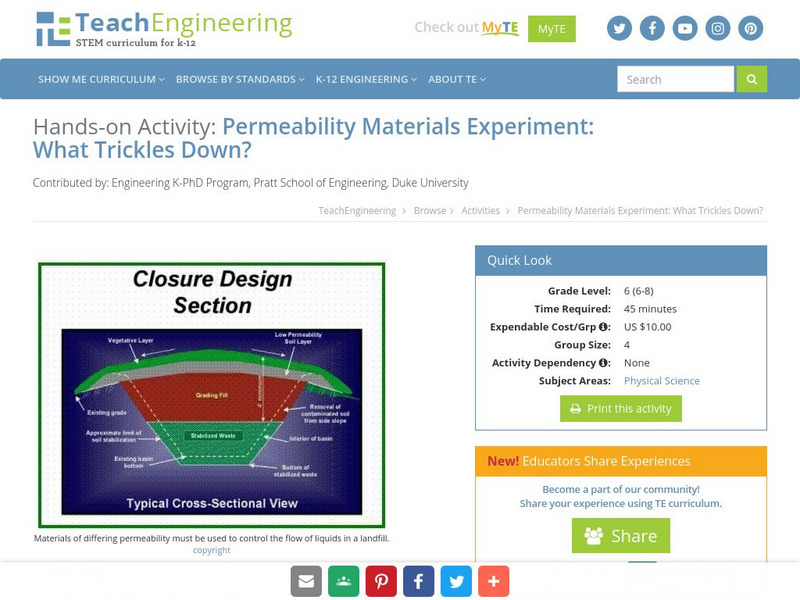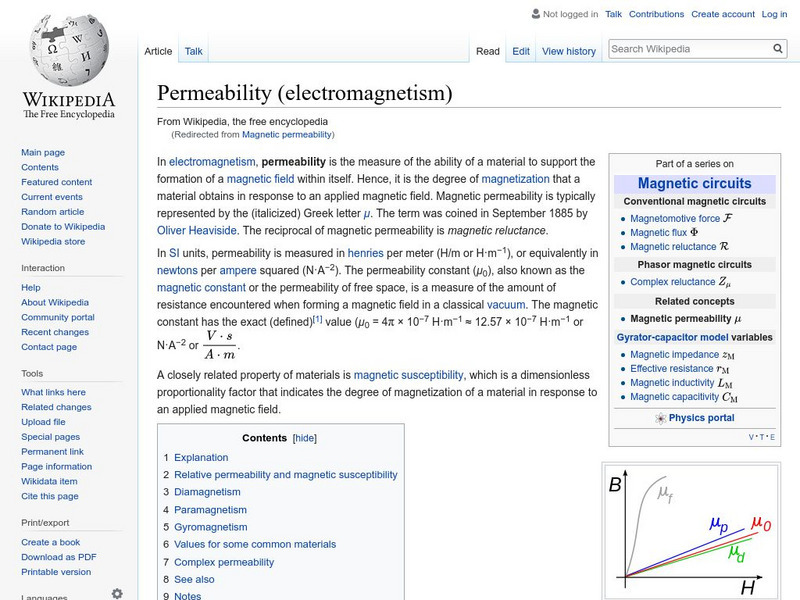Georgia Department of Education
Ga Virtual Learning: Water and Wind
This interactive tutorial discusses the flow of water on the surface and below the surface. You will learn about the causes and actions of wind, and how water and wind move sediment.
TeachEngineering
Teach Engineering: How Fast Does Water Travel Through Soils?
Students measure the permeability of different types of soils, compare results and realize the importance of size, voids and density in permeability response.
TeachEngineering
Teach Engineering: The Other Water Cycle
For young scholars that have already been introduced to the water cycle, this lesson is intended as a logical follow-up. Students will learn about human impacts on the water cycle that create a pathway for pollutants beginning with urban...
Georgia State University
Georgia State University: Hyper Physics: Ferromagnetism
This site from the Georgia State University provides a good overview of ferromagnetic materials, introducing concepts such as magnetic domains, hysteresis, the curie temperature, and magnetostriction.
Georgia State University
Georgia State University: Hyper Physics: Magnetic Properties of Solids
This site from the Georgia State University contains a good overview of some of the magnetic properties that are common to all materials, such as susceptibility and permeability, and then specific discussion of both diamagnetic and...
Science Education Resource Center at Carleton College
Serc: Investigating Soil Composition Soil Soaks Up Water
In this classroom activity, young scholars will show how soil composition affects the amount of water the soil holds. They will test sand and soil independently and then create their own mixture.
American Geosciences Institute
American Geosciences Institute: Earth Science Week: Exploring Porosity
Experiment to find out which size of gravel has the most porosity by measuring volume.
American Geosciences Institute
American Geosciences Institute: Earth Science Week: Soil Properties
Students investigate soil porosity by building a model using the three main soil textures: sand, silt, and clay.
TeachEngineering
Teach Engineering: How Full Is Full?
During this activity, students will learn about porosity and permeability and relate these concepts to groundwater flow. Students will use simple materials to conduct a porosity experiment and use the information to understand how...
TeachEngineering
Teach Engineering: Eek, It Leaks!
During this activity, students will try to construct model landfill liners out of two-inch strips of garbage bags within resource constraints. The challenge is to construct a bag that will hold one cup of water without leaking. This...
TeachEngineering
Teach Engineering: What Trickles Down?
Permeability is the degree to which water or other liquids are able to flow through a material. Different substances such as soil, gravel, sand, and asphalt have varying levels of permeability. In this activity, students will explore...
Cornell Lab of Ornithology
Habitat Network: Pavement or Gravel
Find out how gravel and pavement can be beneficial to a backyard ecosystem.
US Geological Survey
Usgs: Ground Water Aquifers
Resource is a brief explanation of an aquifer and how they work. This article also touches upon artesian wells. A picture and a fun activity to illustrate the concept of an artesian well are included. Click Home to access the site in...
BioMan Biology
Bio Man Biology: Cell Defense: The Plasma Membrane
Learn all about cell membranes in this game. Build a plasma membrane and learn about the membrane's functions. Identify the parts of a membrane, and learn how diffusion, transport, and osmosis work in cells. Includes a worksheet that can...
American Geosciences Institute
American Geosciences Institute: Earth Science Week: Groundwater Movement
Students learn how water moves through rock materials such as sand, gravel, and clay.
Bryn Mawr College
Serendip: Diffusion Across a Selectively Permeable Membrane
Brief text summary of what students learn in the Diffusion across a Selectively Permeable Membrane lab, along with links to download Student Handouts and Teacher Preparation Notes in PDF or Word formats. Main teaching points include...
Energy4Me
Energy4me: Reservoirs and Production
The students will learn that porosity refers to the percentage of holes (pores) in the rock. Permeability is the ability of fluids to travel through porous rocks. If a well is to be successfully produced, the reservoir must have...
Wikimedia
Wikipedia: Permeability
This site from the encyclopedia Wikipedia provides a concise definition of magnetic permeability given in terms of magnetic flux density and magnetic field strength.
Oswego City School District
Regents Exam Prep Center: Permeability
A good visual introduction to permeability, comparing the magnetic permeabilities of air and iron. This site provides a good conceptual introduction to this topic.


















